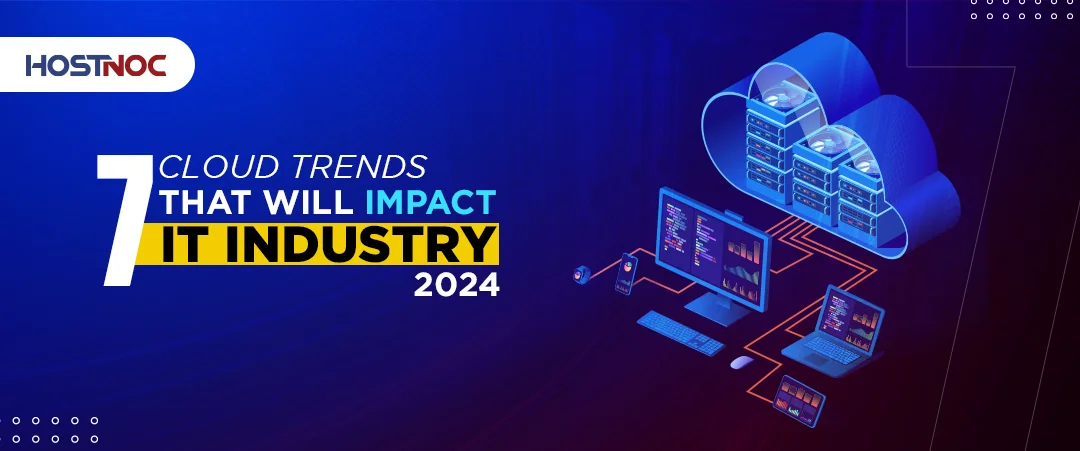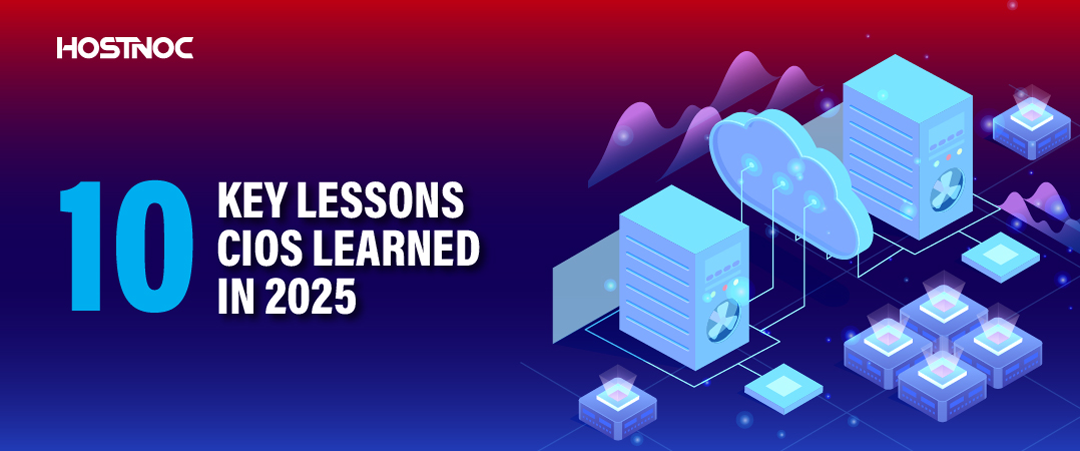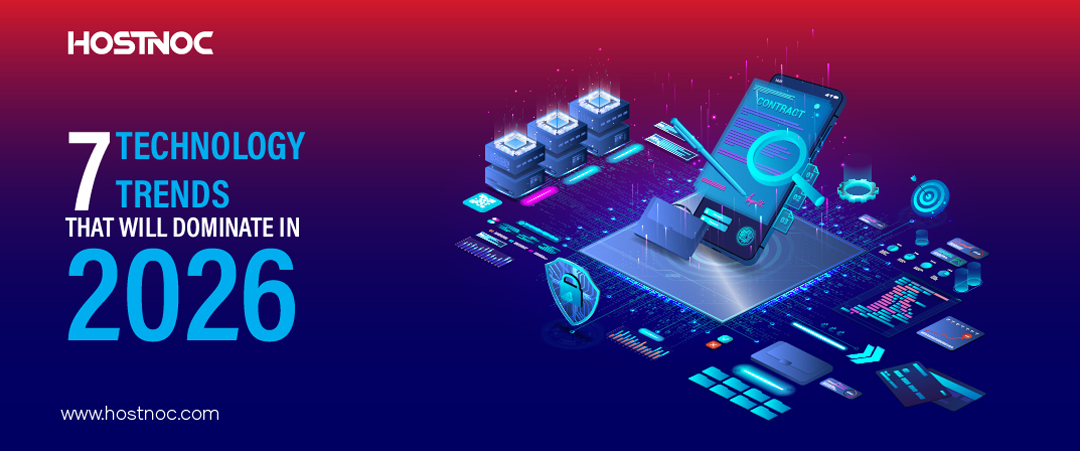Blogs

7 Cloud Trends That Will Impact IT Industry In 2024
October 30, 2023
Get Exclusive Cyber Monday Deals on Dedicated Servers & Hosting Services at up to 50% OFF
November 22, 20237 Technology Trends That Will Dominate In 2024
Gartner recently released its annual top ten strategic technology trend report during their IT symposium and expo conference. According to Gartner, Artificial intelligence will make the biggest impact in the world of technology in 2024. With five out of ten strategic technology trends related to artificial intelligence development, AI will soon become an integral part of every business.
The other five trends are related to protecting the investments that businesses have already made or harnessing the power of emerging technologies to boost their revenue. These trends will shape how business leaders take business decisions and give us a glimpse into the future of innovation.
Gartner recently released its annual top ten strategic technology trend report during their IT symposium and expo conference. According to Gartner, Artificial intelligence will make the biggest impact in the world of technology in 2024. With five out of ten strategic technology trends related to artificial intelligence development, AI will soon become an integral part of every business.
The other five trends are related to protecting the investments that businesses have already made or harnessing the power of emerging technologies to boost their revenue. These trends will shape how business leaders take business decisions and give us a glimpse into the future of innovation.

In this article, you will learn about top ten technology trends that will dominate in 2024.
7 Technology Trends That Will Dominate In 2024
Here are seven technology trends that will make the biggest impact in 2024.
1. AI Democratization
According to Gartner’s prediction, 80% of enterprises will implement generative AI into production environments till 2026. This comes as a surprise since the current number of enterprises who have put generative AI into production stands at less than 5%. These statistics clearly show the exponential rise in adoption of generative AI technology by businesses of all shapes and sizes in the near future.

More importantly, AI democratization will plug in skills and knowledge gaps by giving businesses access to tons of data. This allows them to connect the dots in a much better way and take data driven decisions that can accelerate their business growth. Gartner further adds, “Generative AI (GenAI) is becoming democratized by the confluence of massively pretrained models, cloud computing and open source, making these models accessible to workers worldwide.”
2. Machine Customers
Yes, you read that right. A Machine customer, also known as custobots, is a fancy name of a non-human economic actor that can automatically negotiate prices of goods and purchase your desired products for you. Gartner predicts that there will be 15 billion connected products which can also behave as customers by 2028.

Expect this number to jump even higher as the time passes. This will create trillions of dollars in revenue by 2030. To take advantage of this opportunity, businesses must prepare to support these algorithms or devices or create their own custobots.
3. AI Risks and Security Management
One of the consequences of AI democratization would be the need for AI security and risk management. As more and more enterprises gain access to AI tools, the demand for AI trust, risk and security management will skyrocket. Gartner calls this AI TRISM (AI Trust Risk and Security Management)

Gartner thinks that, “Without guardrails, large language models can rapidly generate compounding negative effects that spin out of control, overshadowing any positive performance and societal gains that AI enables. AI TRiSM provides tooling for ModelOps, proactive data protection, AI-specific security, model monitoring – including monitoring for data drift, model drift, and/or unintended outcomes – and risk controls for inputs and outputs to third-party models and applications.”
4. Platform Engineering
Platform engineering might not be a new concept but Gartner defines it in a unique way. For Gartner, platform engineering is a discipline that deals with the creation of self service internal development platforms. Gartner treats each platform as a separate layer. Every layer is maintained by a dedicated server team and has integrated tools and processes.

Chris Howard, Chief of Research at Gartner explains it with an example, “Think about all of the stuff that I’ve talked about and imagine that you are a technician on an airport tarmac fixing a complicated problem that you’ve never seen before. You get knowledge from schematics. You get knowledge from standard operating procedures. You get knowledge from other people that have seen and fixed this problem.
You get knowledge from the device itself through IoT and sensors and data coming into that environment. Imagine that digital experience for that employee if you can help them solve a problem they’ve never seen before, using generative AI to query the systems and bring stuff back. Or to use mixed reality to actually bring them immersively into that experience, and to use it to fix the problem. That’s where I see this going”
5. Automated Augmented Development
Gartner summarizes automated augmented development as, “AI-augmented development is the use of AI technologies, such as Generative AI and machine learning, to aid software engineers in designing, coding and testing applications. AI-assisted software engineering improves developer productivity and enables development teams to address the increasing demand for software to run the business. These AI-infused development tools allow software engineers to spend less time writing code, so they can spend more time on more strategic activities such as the design and composition of compelling business applications.”

6. Rise of Intelligent Applications
Intelligent applications have been around for quite some time now but just like other technologies on this list Gartner conceptualizes it a bit differently. According to Gartner, “Intelligent applications include intelligence – which Gartner defines as learned adaptation to respond appropriately and autonomously – as a capability.

This intelligence can be utilized in many use cases to better augment or automate work. As a foundational capability, intelligence in applications comprises various AI-based services, such as machine learning, vector stores and connected data. Consequently, intelligent applications deliver experiences that dynamically adapt to the user.”
7. Constant Threat Exposure Management
Gartner states that, “Continuous threat exposure management (CTEM) is a pragmatic and systemic approach that allows organizations to evaluate the accessibility, exposure and exploitability of an enterprise’s digital and physical assets continually and consistently. Aligning CTEM assessment and remediation scopes with threat vectors or business projects, rather than an infrastructure component, surfaces not only the vulnerabilities, but also uncatchable threats”

Which technology trend will create the biggest splash in 2024? Share it with us in the comments section below. We would love to hear from you.
Featured Post
Top 10 IT Challenges for 2026 and How To Overcome Them
By 2026, the global enterprise IT landscape will face significant challenges due to the convergence of autonomous cyber threats, talent shortages, and increasing regulatory pressures. Traditional […]
10 Key Lessons CIOs learned in 2025
2025 has been a defining year for technology leaders. From the acceleration of AI-driven decision-making to the urgent demands of cybersecurity resilience and digital sustainability, CIOs […]
7 Technology Trends That Will Dominate In 2026
Table of Contents 7 Technology Trends That Will Dominate In 2026 1. Vertical AI Agents 2. Hybrid IT and Cloud Repatriation 3. AI-Powered Automation and Next-Generation […]












